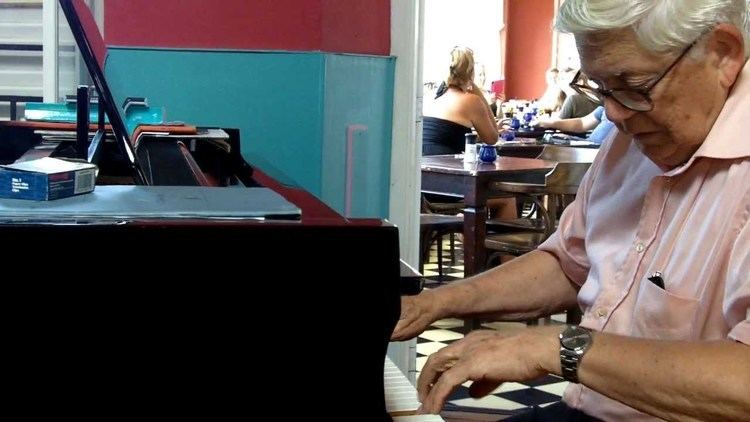Name Wim Muller | Role Composer | |
 | ||
Wim statius muller david dubal 3 8 84
Wim Statius Muller (Curaçao, 26 January 1930) is a Curaçaoan composer and pianist who has been nicknamed "Curaçao’s Chopin" for his romantic piano stylings. Although he is a Juilliard graduate, his musical career did not begin in earnest until after he retired from a career in security and counterintelligence.
Contents
- Wim statius muller david dubal 3 8 84
- Wim statius muller mazurka in a minor
- Career
- Work
- Documentary and awards
- Discography
- References

Wim statius muller mazurka in a minor
Career

Statius Muller was born in 1930 on Curaçao, in Willemstad's Otrabanda district. He began piano lessons at age seven with Jacobo Palm, among others. He received a thorough musical education, entering in 1949 the Juilliard School of Music in New York City, where he studied piano and composition with Josef Raieff (the last pupil of Alexander Siloti).

He received his degree in 1954, and in 1955 began teaching piano and music history at Ohio State University in Columbus, Ohio. In 1960, Statius Muller left his position at the University to accept a job as a civil servant, initially in Willemstad (Curaçao), where he was asked to collaborate in the creation of a security service. In 1972, he relocated to the Netherlands, later describing this move as follows:

He worked for a long time in a management position at the Domestic Security Service ("BVD") in The Hague and then at NATO headquarters in Brussels.
After his retirement in 1995, he returned to Curaçao, where he had more time for the piano.
Statius Muller performs regularly in the Netherlands Antilles, and also occasionally in the Netherlands, the United States and Poland.
Work
Statius Muller was a student of Jacobo Palm, and has been influenced by Palm, whose grandfather Jan Gerard Palm initiated the popularity of salon music and Caribbean dance music based on classical music. Also, waltzes and Frédéric Chopin's mazurkas were played a lot in Curaçao, and have strongly influenced his work.
Statius Muller especially composed music for dancing, in settings for piano, not only waltzes and mazurkas, but also Caribbean dances such as the tumba derived originally from the Congo. Tropical, syncopated rhythms are clearly apparent in virtually all of his works. The works are, however, no longer intended to dance to, but are stylized and refined into concert music.
Many of his over 200 compositions are not published. A well-known published work is the Antillean Dances for piano (opus 2, 4, 5, 6). He performs many of his own compositions.
Documentary and awards
In 2013 a documentary about Statius Muller was created by filmmaker Alaric Alexander Smeets. The documentary is entitled Nostalgia:The Music of Wim Statius Muller, after a waltz which is one of Statius Muller's most famous works.
In 2012 Statius Muller was awarded a Silver Carnation by Queen Beatrix for his contribution to the preservation of the musical heritage of the Caribbean Islands, in particular of the classical music of Curaçao. Statius Muller was also praised as a mentor and inspiration to young musicians in the Caribbean part of the Kingdom.
Statius Muller is a Knight in the Order of Orange-Nassau.
Discography
In 1994, Wim Statius Muller recorded a CD as a pianist, performing his own compositions, Antillean Dances Opus 4, on René Gailly CD87018. He has also recorded a CD, Antillean Treasures, on the Bruno Klassiek label.
